ARDUTEKTEN
– April 30th, 2009
The Swedish Magazine Arkitekten makes a reflection about the relevance of 3D printing and the internet. In the article, titled something like “Filesharing changes the future of design”, the editors look into the relationship between technology and intellectual property. They look through current design trends. Among other things, Arduino is mentioned, as one of the open source tools used in the production of Spoorg (browse down in the page), by Pablo Miranda and Aasmund Gamlesaeter.
(c) 2009 Arkitekten, picture by D. Cuartielles
What really strikes me from this article is the fear it transmits towards open source, as well as towards open fabrication. They expect people with laptops to copy 3D shapes while sitting in a café, sending their files resembling designer pieces to manufacture and getting them shipped home a couple of days later. Actually, the article’s subtitle says “the combination of 3D files over the net and 3D printing facilities can bring illegal downloads of design”.
(c) 2009 Arkitekten, picture by D. Cuartielles
That might in fact happen, and I would love to see it happening. I believe openness challenges our way of understanding many things that we have been giving for granted for too long. Anyway, this is my personal opinion** and shoud NOT be understood as an Arduino opinion.
(** personal as in D. Cuartielles’ )
LIBRARY FOR LIBELIUM’S GPS MODULE
– April 21st, 2009
I have been a little slow the last two months in reporting about my Xmass presents. Being on parental leave but being forced to arrange the moving of my lab to a new building seem to be two incompatible actions, but they are perfectly possible here in Sweden.
(c) 2009 BlushingBoy, GPS Shield on Arduino Mega
Leaving excuses on the side, I got a little jealous about Tom posting how he uses the Mega; therefore I decided to push a little harder for a library I am writing for the guys at Libelium. They sent me their GPS module and I decided to make a simple wrapper for users to plug their Tyco-GPS modules to Arduino Diecimila/Duemilanove/Mega from Arduino’s IDE 13/14/15. This is how much the whole thing has evolved since I started writing this piece of code in January… every time I thought I was done, we would release a new board or a new IDE and I had to debug the thing.
The library is running on a modified version of SoftwareSerial, and uses two functions by M. Hart, who wrote the brilliant tinyGPS library. My goal was to make something where unexperienced users would just have to write something like “GPS.init()” and “Serial.println(GPS.getLongitude())” and the thing would just work. Depending on how much you use the serial communication, this library weights between 4KB and 9KB … but it does everything for you  On the other hand, on the Arduino Mega, 9KB is not even 10% of the available memory space. Download the library directly from this link.
On the other hand, on the Arduino Mega, 9KB is not even 10% of the available memory space. Download the library directly from this link.
(c) 2009 BlushingBoy, GPS Shield on Arduino Duemilanove
I crafted three examples (basic, medium, advanced) featuring the use of different techniques to parse the GPS sentences. If you write something like a data logger, or a GPS toy, post your link here and I will be more than happy to include your code in the next revision of the library. Of course, if you found any errors or made any improvements, do the same thing.
This code compiles for Duemilanove and Mega, without any alterations. It works fine with the processors ATmega168 and up. Uses about 300 Bytes of memory space and is documented inside the code. Ah … there is a README.txt you shouldn’t miss; it explains how NOT to use the library.
[NOTE: If you are a linux user, please remember there is a bug in GCC-AVR that affects the way long ints are multiplied and this library makes an extensive use of that type of numbers. Please, read this note on Arduino's playground and upgrade!!]
LIFE CYCLE ASSESSMENT OF DUEMILANOVE
– April 13th, 2009
Caroline Brown, an ITP student in Jennifer Van der Meer’s class, is trying to do alife cycle assessment on the Duemilanove, to determine its environmental impact. I think it’s an interesting idea, since I’ve never seen an LCA done on a module like the Arduino. I’ve seen a few on commercial products, but never on development tools.
She’s currently collecting info on how you use your boards and how long they stay in use. If you’re interested, her survey is online here. It’s anonymous.
This is a very short project she’s doing (only a few weeks long), so the results may not be conclusive, but nevertheless, I hope it’ll reveal enough about the environmental impact to delve into more assessment in the future. It’d be great to learn something about how to minimize the impact of what we do.
MEGA KNIGHT RIDER EXAMPLE
– April 1st, 2009
I just finished a quick sample project for the Arduino Mega, doing a project that comes up all the time, and usually requires a multiplexer, Max7219, or shift register: controlling 128 LEDs with a Mega. In this example, there’s nothing but a mega and 2 8×8 LED matrices. Whee!

And yes, that’s a nifty light blue prototyping shield designed by tinker.it and made by Smart Projects. Looking forward to using more of them.
ARDUINO MEGA: BIGGER, MORE POWERFUL, STILL BLUE.
– March 26th, 2009

We’re happy to announce the release of the Arduino Mega, a larger, more powerful Arduino board. It’s based on the on the ATmega1280 (datasheet), which has 128 KB of Flash (program) memory, 8 KB of RAM, and 4 KB of EEPROM. The board has 54 digital pins (of which 14 provide PWM output), 16 analog inputs, 4 hardware serial ports, I2C, and all other goodness you expect from an Arduino board. The Mega is compatible with most shields designed for the Duemilanove, and includes the same automatic power selection, auto-reset on upload, and pre-burned bootloader.
To use the board, you’ll need to download Arduino 0015, now available from thedownload page (Linux version coming soon). Just select Arduino Mega from the Tools > Board menu and you’re good to go. The reference pages for individual functions will be updated over the next few days to reflect the capabilities of the Mega.
The Mega will be appearing soon at distributors throughout the world. Check the buy page for the one closest to you.
Photo by SpikenzieLabs
PHYSICAL PROTOTYPING – IN THE MAKING
– March 21st, 2009
Next week is the final presentation of the Physical Prototyping projects by the Interaction Design BA. students at K3. They are working hard, sometimes too hard, making it to the point of not thinking clear about the consequences of e.g. attempting to power-drill a hole on the plexy case of a project without taking the electronics out. Take a look at the following picture and judge by yourself, it is tagged in flickr with: arduino, crashed, smashed and drill.
GO GO GOBETWINO
– March 18th, 2009
Since we started the Southern Scandinavia Arduino meetings last year, Mikael would pop up to show his latest music instrument, discuss about some funky projects or just drink a cup of coffee. During our last meeting in Malmo, he came out with his best kept secret: Gobetwino, a Windows program that can link Arduino boards with anything software. There are many approaches to connect Arduino with software packages, but he takes the one of hacking one of the most useful MS Windows features: it is possible to call any programs by means of keystrokes, and it is possible to generate keystroke-like events via software.
Gobetwino will log data into a file, send you an email, type into a word document or an excel sheet, send a command to Arduino on email arrival… The only backdrop of this amazing piece of code is that it won’t run in my Ubuntu-powered laptop! The software is currently freeware in its revision 0.5 and Mikael promises in his website he will open source it in the future, once the code has been cleaned up and the Danish comments have been translated (believe me, you don’t want Danish-commented source… or maybe you do) . It comes with a 35 pages manual that will guide you through the configurations needed to make Gobetwino open files, send emails, and report to Arduino. If you want to help Mikael with further developing Gobetwino, go ahead, stress-test it in your computer and report the bugs to him.
Mikael Moerup is an artist and designer living and working in Copenhagen, Denmark. He was part of The Lab, a defunct media space in the center of the Danish capital, builds crazy music instruments, likes chocolate, and has the ability of finding cheap-but-cool LCDs with red backlight!
Here we go! Download Gobetwino directly here!
SNAP-ON PANEL FOR ARDUINO BASED INSTRUMENTS
– March 9th, 2009
Last week I hosted a workshop at Arteleku in San Sebastian, Spain. We spent two days building small Arduino based music instruments using the Smapler v2 shield. I couldn’t resist the temptation of making a laser-cut design that I had in my head for some time … a snap-on board where to tidy up the Arduino board, the wires, the headphone connector and even an old computer keyboard.
(c) 2009 BlushingBoy.org for Arteleku, Donostia, Spain
The workshop -titled 16KB OF SOUND- focused in the idea of creating music instruments taking advantage of generative sound related techniques. If you are interested in the code developed during that workshop, visit this link. Just as a teaser, the following video shows the simple tremolo example, on how to make a CASIO PT100-like tremolo keyboard out of an old PS2 computer keyboard.
(c) 2009 Blushingboy.org, Arteleku, Donostia, Spain
STOCK BY M. MAÑAS
– March 4th, 2009
Moises Mañas is an artist as well as professor at the School of Fine Arts, University of Valencia. We met because of common interests and have worked together a couple of times. Currently we prepare a workshop we will be hosting together in San Sebastian in the summer 2009.

Stock, (c) 2009 Moises Mañas
His personal art career has drifted away from painting to media arts and it is starting to flourish now. Stock is his latest piece as presented by the Gallery Rosa Santos (Valencia, Spain) at ARCO -the yearly art fair in Madrid, one of the biggest in the world.
Stock represents physically the status of the stock-market via moving three overalls up an down using solenoids. The technical explanation to his piece can be seen here, it is in Spanish, but I think the pictures talk by themselves.
You can find about Moises at his gallerist, but also at the Laboratorio de Luz’s website, the department of new media at Valencia’s university.



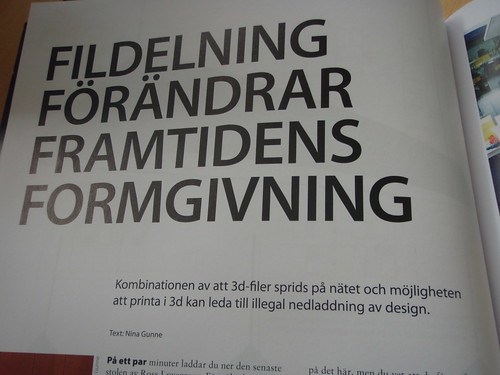
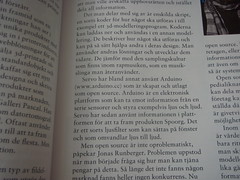

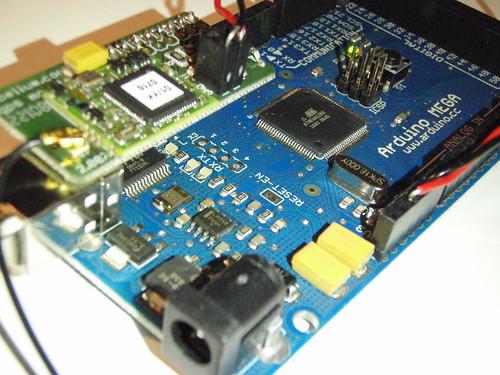
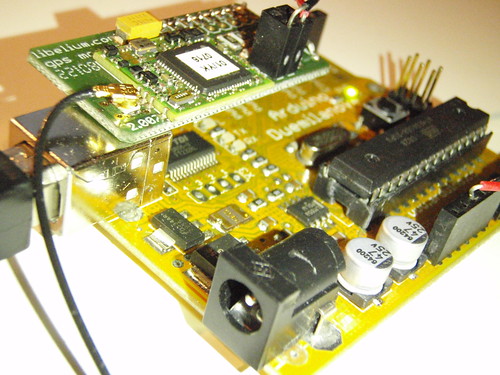


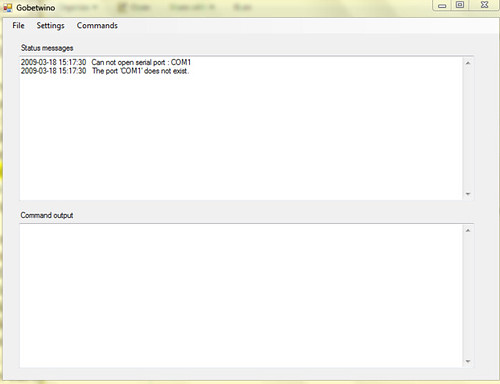
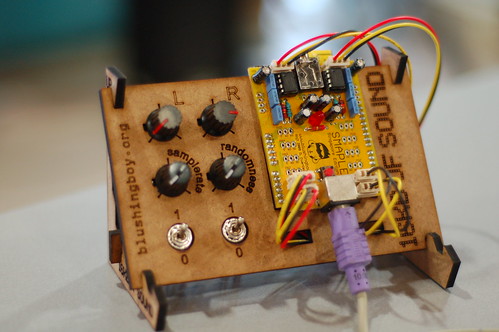







0 comentarios:
Publicar un comentario